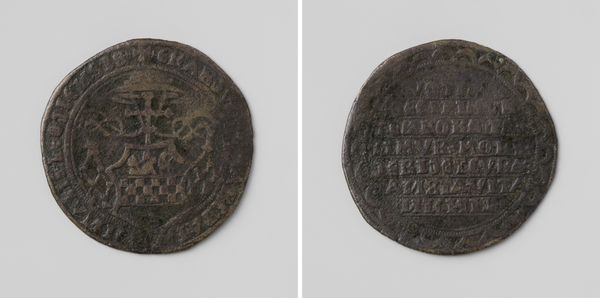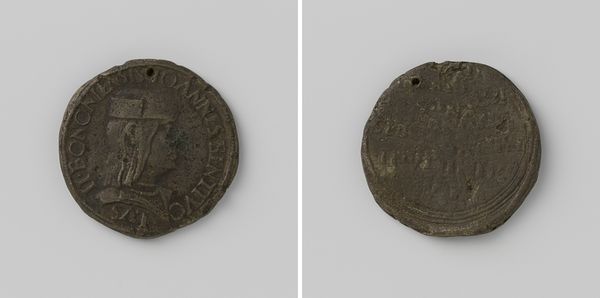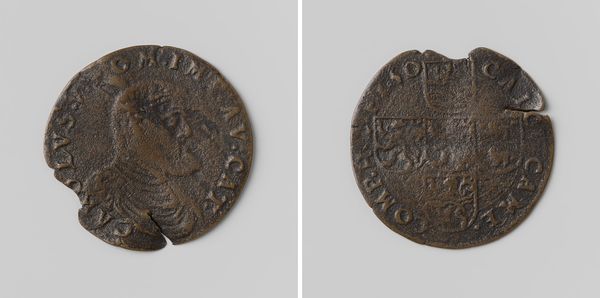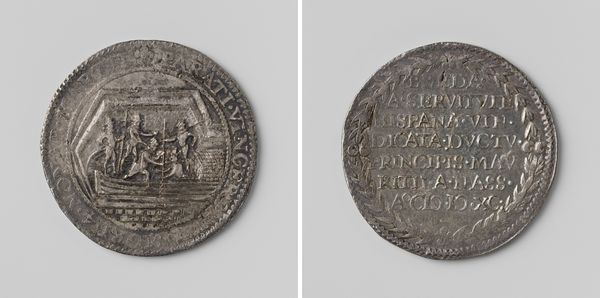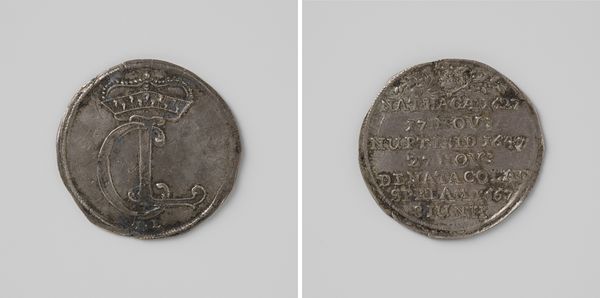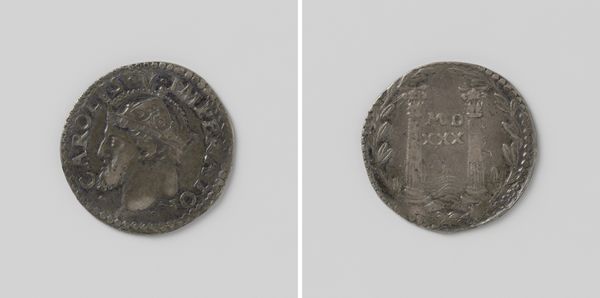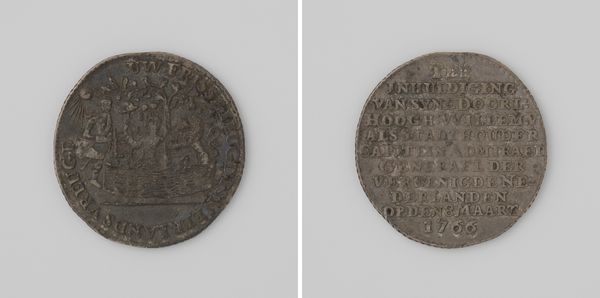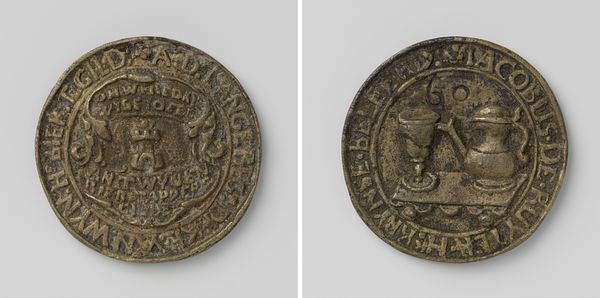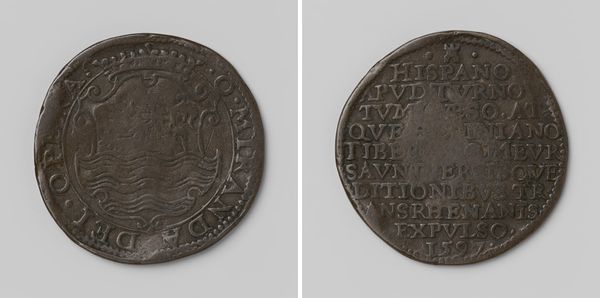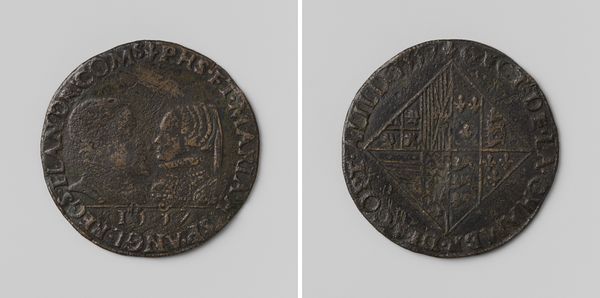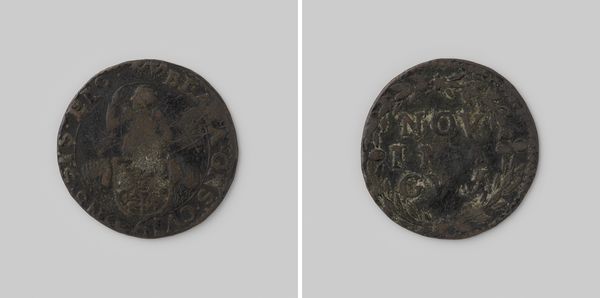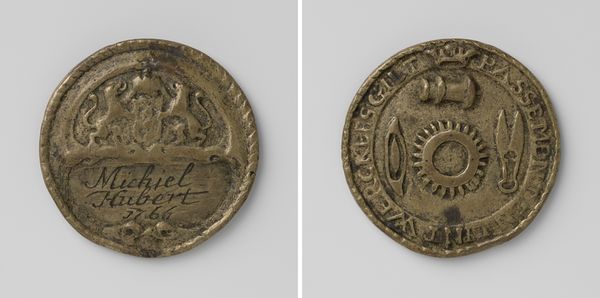
Onderwerping van Hongarije door de Turken, penning ter ere van Lodewijk II, de overleden koning van Hongarije en Bohemen 1508 - 1544
0:00
0:00
metal, relief, sculpture
#
portrait
#
metal
#
sculpture
#
relief
#
11_renaissance
#
sculpture
#
history-painting
#
statue
Dimensions: diameter 3 cm, weight 7.10 gr
Copyright: Rijks Museum: Open Domain
Curator: Well, hello there. I’d like to direct your attention to this fascinating piece from the 16th century. What we have here is a medal commemorating the Submission of Hungary to the Turks, specifically made in honor of Louis II, the deceased King of Hungary and Bohemia. It dates sometime between 1508 and 1544. Editor: My first impression? It’s incredibly sobering. The metal, worn with age, speaks of loss. There’s a sense of stoicism, a weighted quietness in the face of devastation. Curator: Indeed. It speaks volumes about power dynamics in that era, doesn't it? A small metal token referencing immense political upheaval. I mean, consider Hungary’s position; caught between the expansive Ottoman Empire and the fractured politics of Europe. Editor: Exactly. Let’s dive into that symbolism a bit more. What strikes me is how explicitly the imagery aims to cement the memory of a specific, politically charged event. The deceased king himself is an important symbolic figure here. Curator: Absolutely. It functions, in a way, as both a historical document and a piece of propaganda. Consider the image of Louis II, depicted as a figure of power, though one clearly fallen. Even in defeat, the medal seems determined to evoke a sense of regal authority. Editor: A romanticized, and probably politically motivated authority, right? A construction designed to uphold the image of a dynasty? It raises all sorts of questions about the distribution and intended audience of these kinds of objects. Was it for the royal court, or for broader circulation? Curator: A really important point. While the production details are attributed to an anonymous creator, the purpose would have been clear. The imagery serves as an appeal, embedding itself within the consciousness of the period and echoing throughout generations. Editor: It certainly worked! The careful inscription, combined with that almost mournful depiction of the king, has preserved not just an image, but an emotion— a cultural memory of profound loss and submission. Curator: I concur entirely. Analyzing objects like this allows us to really consider the complexities of the past—not as fixed points in time, but as living intersections of identity, power and cultural impact. Editor: Definitely. Looking at the visual language deployed here provides incredible insight into a very turbulent and transformative period of European history.
Comments
No comments
Be the first to comment and join the conversation on the ultimate creative platform.
